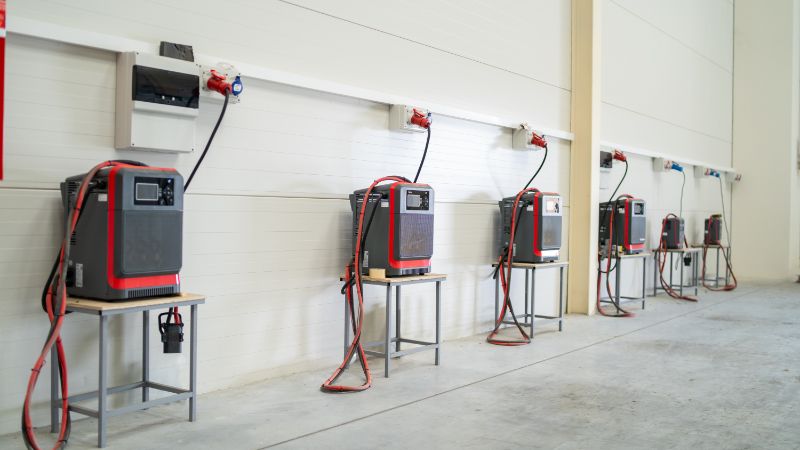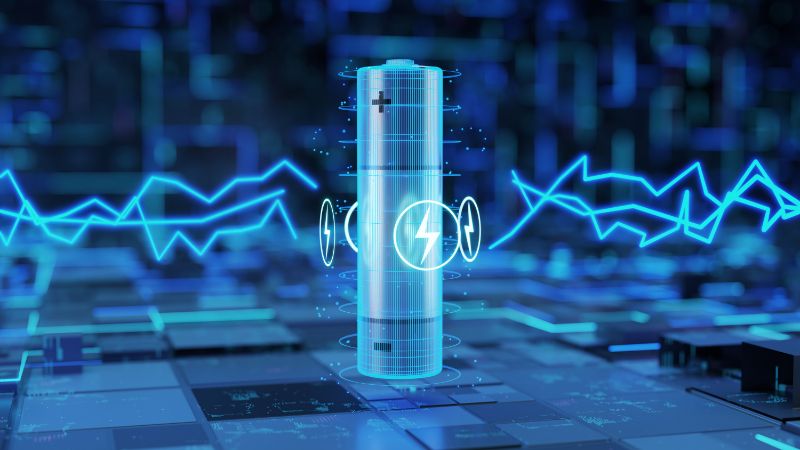Do solar batteries need to be charged before use? It’s a common and important query, and the answer isn’t always a simple yes or no. Let’s see the details.

The Short Answer: Generally, Yes, but It’s Complicated.
Most new solar batteries arrive with a partial charge, typically between 30% and 50% State of Charge (SoC). Manufacturers do this for several key reasons:
- Safety:Shipping fully charged (or fully depleted) lithium-ion batteries, the most common type for solar storage, can pose safety risks during transit and handling. A partial charge is a safer state.
- Longevity:Storing batteries at a very low or very high SoC for extended periods can degrade their health and shorten their lifespan. A mid-range charge helps preserve battery chemistry during shipping and storage before installation.
- Testing:This partial charge allows for initial testing and diagnostics by the manufacturer and sometimes by the installer upon arrival.
However, “partially charged” doesn’t mean “ready for immediate full-scale operation.” While some systems might allow for immediate, limited use, it’s almost universally recommended and often required by manufacturers to fully charge a new solar battery before putting it into regular service.
Why a Full Initial Charge Matters
Think of it like priming an engine or seasoning a new cast iron pan. The initial full charge cycle plays a critical role in the battery’s long-term performance and health:
- Cell Balancing (for Lithium-ion):Lithium-ion battery packs consist of many individual cells. During the first full charge, the Battery Management System (BMS) works to balance these cells, ensuring they all reach the same voltage level. Proper cell balancing is crucial for maximizing capacity, efficiency, and the overall lifespan of the battery. If cells are imbalanced, some may overcharge or over-discharge, leading to premature degradation.
- Calibration:The initial charge helps calibrate the BMS. This system is the brain of your battery, monitoring SoC, temperature, and overall health. An accurate calibration from the outset ensures the BMS provides reliable readings and protects the battery effectively.
- Activating Battery Chemistry:For some battery chemistries, the initial charge cycle helps to fully activate the electrochemical processes within the cells, setting them up for optimal performance.
- Manufacturer Warranty:Crucially, many manufacturers stipulate in their warranty terms that the battery must be properly commissioned, which includes an initial full charge according to their specifications. Skipping this step could potentially void your warranty.

What About Different Battery Types?
While lithium-ion batteries (like Lithium Iron Phosphate – LiFePO4, or Nickel Manganese Cobalt – NMC) are prevalent in modern solar storage, older technologies like lead-acid batteries have different characteristics.
- Lithium-ion Batteries:As discussed, these generally arrive partially charged and require a full initial charge for cell balancing and BMS calibration. They also benefit from a controlled first charge.
- Lead-Acid Batteries (Flooded, AGM, Gel):These may also arrive partially charged. Lead-acid batteries are more susceptible to damage from being left in a discharged state (sulfation). Therefore, ensuring they are brought to a full charge soon after installation is also critical to prevent early capacity loss and extend their life. The charging profile for lead-acid is different from lithium-ion, often involving stages like bulk, absorption, and float.
The Pre-Use Charging Process: What to Expect
The pre-use charging process isn’t something you’ll typically handle yourself if you’re having your system professionally installed.
- Professional Installation:Your solar installer is responsible for correctly installing and commissioning your battery system. This includes ensuring the battery is charged according to the manufacturer’s specifications before it’s put into regular operation. They will connect it to your solar PV system (or sometimes the grid, if necessary for an initial charge) and monitor the process.
- Manufacturer’s Guidelines are Key:Always, always refer to the specific manufacturer’s installation manual and guidelines for your particular battery model. These documents will outline the precise steps for initial charging, any required settings on the inverter or charge controller, and ideal conditions.
- Time Required:The time it takes to fully charge a new solar battery for the first time can vary. It depends on the battery’s capacity (kWh), its initial SoC upon arrival, and the power available from your solar array or the grid for charging. It could take several hours to a full day.
What Happens If You Don’t Charge It Properly Before Use?
Using a solar battery extensively without a proper initial full charge can lead to several problems:
- Reduced Capacity:Without proper cell balancing (in lithium-ion batteries), you may not be able to access the battery’s full rated capacity.
- Shorter Lifespan:Imbalanced cells or an uncalibrated BMS can lead to undue stress on the battery, accelerating degradation and shortening its operational life.
- Inaccurate SoC Readings:The BMS might provide incorrect information about how much energy is stored, leading to unexpected shutdowns or inefficient use of your stored solar power.
- Potential Warranty Void:As mentioned, failing to follow the manufacturer’s commissioning procedures can jeopardize your warranty coverage.
Key Takeaways for Homeowners
- Don’t Assume:Never assume your new solar battery is ready for full, demanding use straight out of the box, even if it has some charge.
- Trust Your Installer:A reputable solar installer will handle the initial charging and commissioning process correctly. Discuss this with them and ensure they are following the battery manufacturer’s specific guidelines.
- Read the Manual:Familiarize yourself with the owner’s manual for your battery. It contains vital information about its operation and maintenance, including initial charging.
- Focus on Long-Term Health:The initial charge is an investment in the long-term health, performance, and lifespan of your valuable solar battery.

Solar Battery Charging Dos & Don’ts
Understanding how to properly charge and maintain your solar battery is key to maximizing its lifespan and performance. Here are some fundamental dos and don’ts:
| Dos 👍 | Don’ts 👎 |
| Do always follow the manufacturer’s specific guidelines and installation manual for your battery model. | Don’t assume all batteries are the same; charging parameters can vary significantly between types and brands. |
| Do ensure a proper and complete initial commissioning charge as recommended by the manufacturer. | Don’t skip or rush the initial full charge cycle, as this is crucial for calibration and cell balancing. |
| Do use a compatible, high-quality solar charge controller or hybrid inverter designed for your battery chemistry (e.g., LiFePO4, NMC, Lead-Acid). | Don’t use underrated, incompatible, or incorrectly configured charging equipment. |
| Do ensure charging parameters (voltage, current) in your charge controller/inverter are correctly set according to the battery manufacturer’s specifications. | Don’t regularly overcharge the battery beyond its recommended maximum voltage. |
| Do monitor your battery’s State of Charge (SoC) and Depth of Discharge (DoD). Aim to operate within the recommended DoD to prolong lifespan. | Don’t consistently discharge the battery too deeply, especially beyond the manufacturer’s recommended minimum SoC or maximum DoD. |
| Do ensure your battery is installed in a location with appropriate temperature control or ventilation, as per manufacturer specs. Extreme temperatures affect performance and longevity. | Don’t expose batteries to excessively high or low temperatures for prolonged periods without proper thermal management. |
| Do periodically inspect battery terminals, connections, and cables for any signs of corrosion, looseness, or damage. | Don’t ignore warning signs, error codes from the BMS/inverter, or unusual battery behavior (e.g., overheating, swelling). |
| Do understand the specific maintenance requirements for your battery type (e.g., equalization for some lead-acid types, though less common for lithium). | Don’t attempt complex maintenance or repairs unless you are a qualified technician. |
| Do allow for adequate ventilation around the battery system, especially for types that may off-gas (like some lead-acid batteries). | Don’t block ventilation pathways or install the battery in an unventilated, airtight enclosure unless designed for it. |
| Do consult a qualified solar installer for proper system design, installation, and commissioning. | Don’t try to DIY the entire installation and commissioning process if you lack the expertise, especially with high-voltage DC systems. |
In Summary
Yes, solar batteries, particularly modern lithium-ion types, generally need to be properly and often fully charged before being put into regular, demanding use. While they arrive partially charged for safety and storage, this initial commissioning charge is vital for cell balancing, BMS calibration, activating the chemistry, and ensuring you get the most out of your investment in terms of performance, longevity, and warranty coverage. Always defer to your professional installer and the manufacturer’s specific instructions for your battery model.
Power Your Future with Deye ESS: Expert Solutions & Support
To ensure optimal performance and longevity for your solar energy storage, proper initial charging and ongoing maintenance are crucial. If you’re looking for reliable and advanced battery solutions, consider exploring Deye ESS products.
Deye offers a comprehensive range of Low Voltage Series and High Voltage Series batteries, including New Arrival systems featuring safe Lithium Iron Phosphate (LFP) technology. These systems are designed for various applications, from residential to commercial and utility-scale projects, emphasizing safety, longevity, and modularity.
For expert tips tailored to your specific energy storage needs or for any inquiries about our innovative solutions, consult Deye ESS today. We are committed to providing high-quality energy storage systems and comprehensive support.